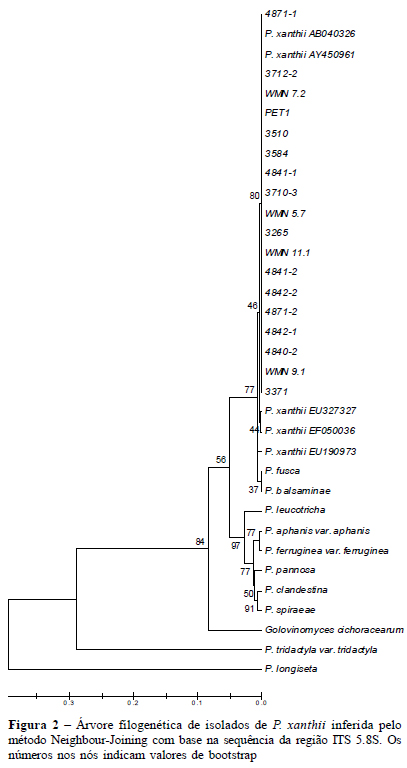Melon crop (Cucumis melo L.) is a fruit largely cultivated in Brazil, especially in the Northwestern region, where it is produced mainly for export. Plants of the melon family, such as cucumber and pumpkin, can be severely affected by powdery mildew, caused by Podosphaera xanthii. This fungus has several physiological races and their correct identification is important for managing the disease, since the use of resistant cultivars is the most effective method for its control. However, identification of races by the traditional method of inoculation in a differential series of melon varieties is laborious and error prone. Due to this, an alternative method would be the use of molecular markers to quickly determine the race identity. The objective of this study was to analyze the variability among P. xanthii isolates previously classified into races through the AFLP technique and sequencing of the rDNA's ITS 5.8S region. With the AFLP markers a dendrogram was generated, where the isolates could not be grouped according to their races, geographic region or host. With this technique, a high variability among isolates was verified, with maximum genetic similarity of 69% and minimum similarity of 23%. In contrast to the AFLP data, there was no sequence variation in the ITS 5.8S region among isolates. Thus the AFLP data indicated that the isolates have a heterogeneous genetic composition even though this was not evidenced by the sequencing of the ITS region.
Powdery mildew; Cucumis melo; races; genetic diversity




